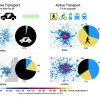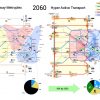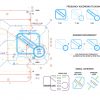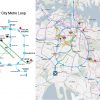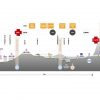 Passive Transport diffuses density while Active Transport promotes density within cities
Passive Transport diffuses density while Active Transport promotes density within cities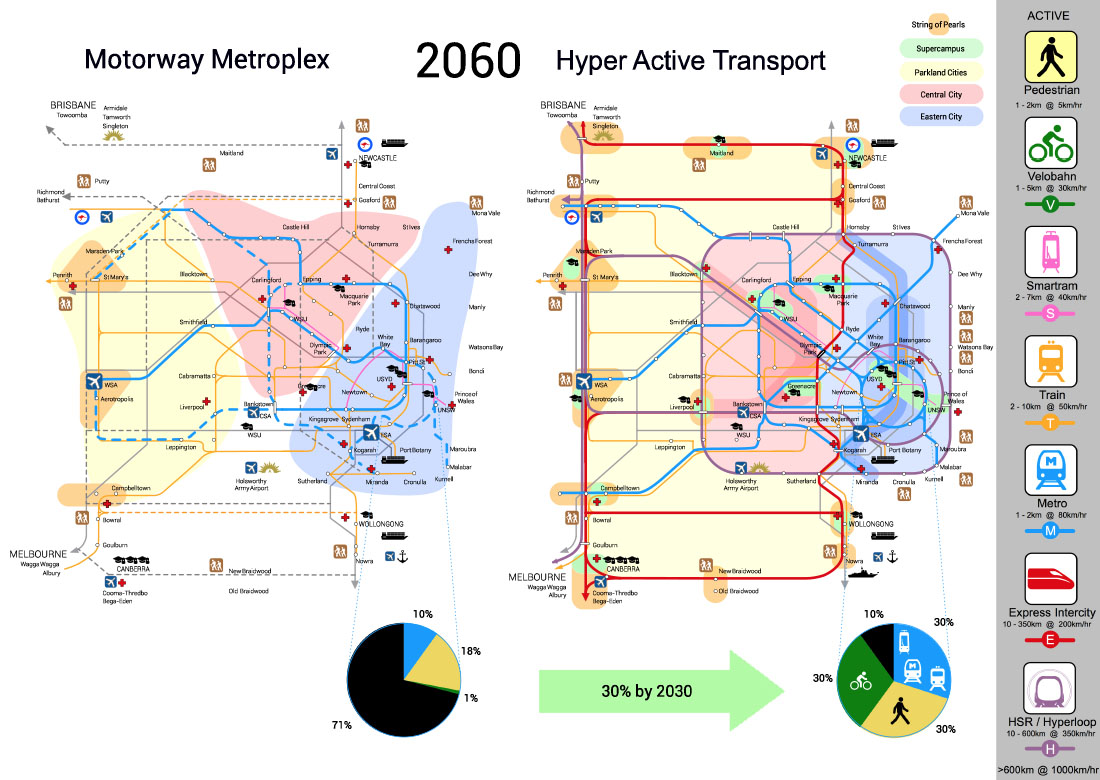 Hyper Active Transport (HAT) expands on the Motorway Metroplex 3 City Concept for Sydney
Hyper Active Transport (HAT) expands on the Motorway Metroplex 3 City Concept for Sydney Hyper Active Transport's hybrid metro loop
Hyper Active Transport's hybrid metro loop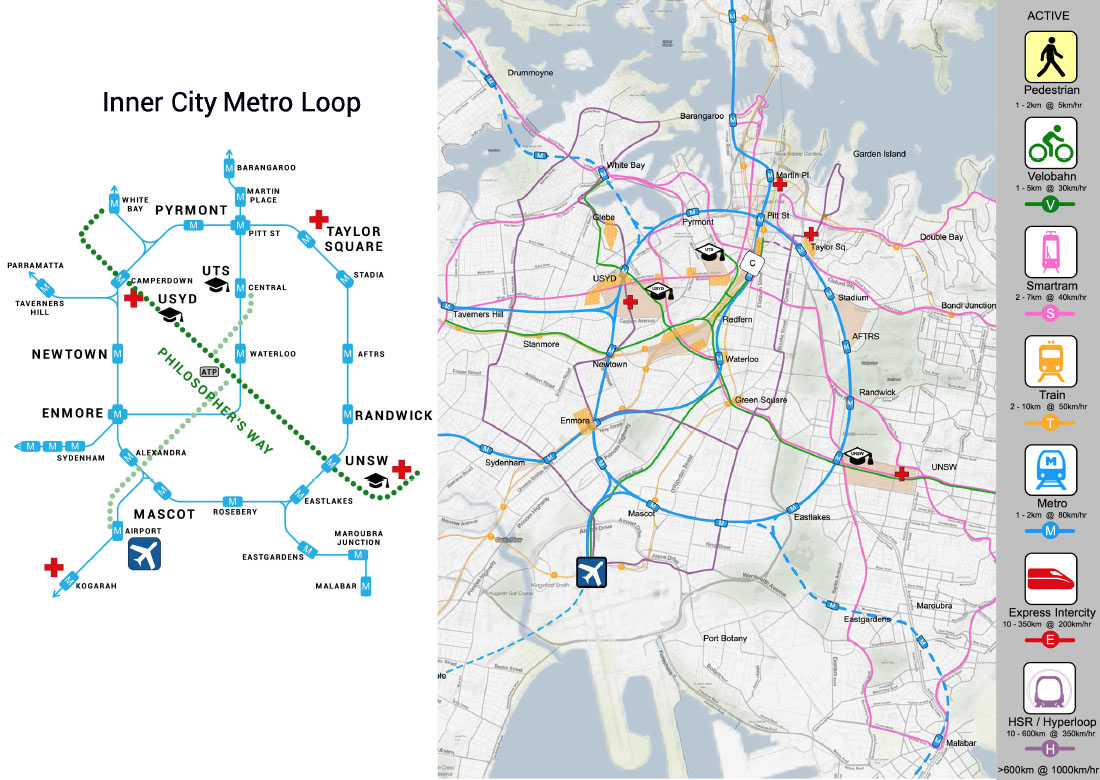 Hyper Active Transport extends Metro West to create an Inner City Metro Loop
Hyper Active Transport extends Metro West to create an Inner City Metro Loop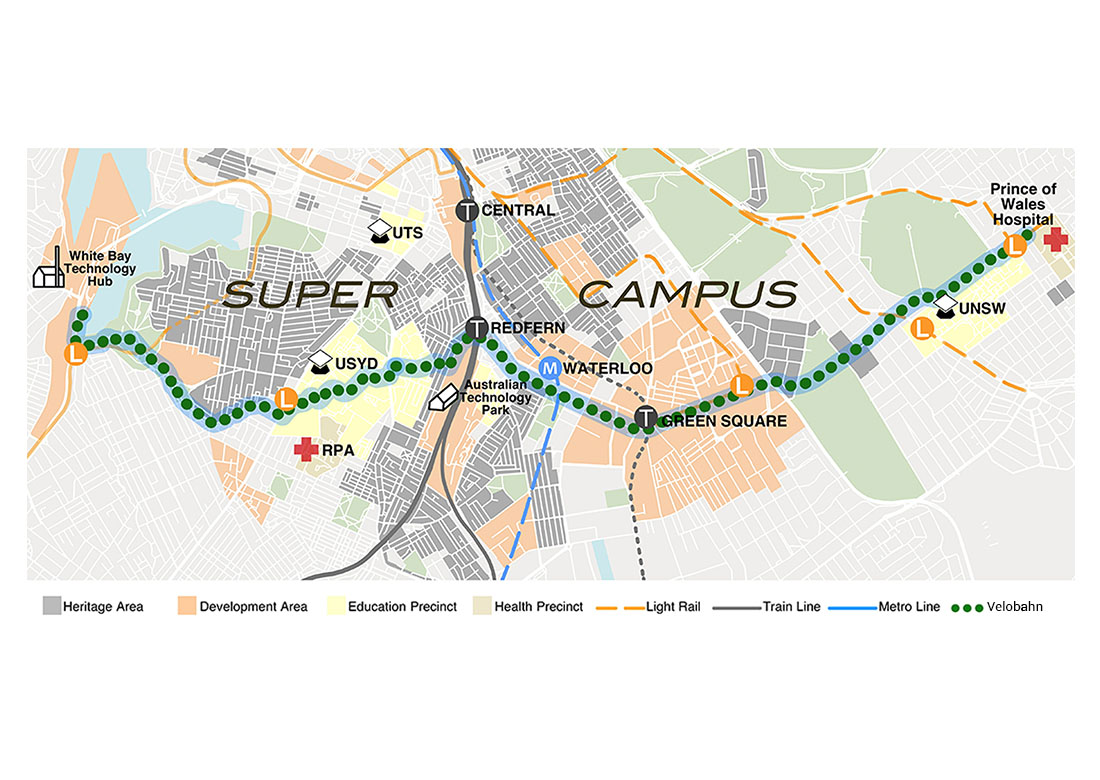 Velobahn - Bay to Beach
Velobahn - Bay to Beach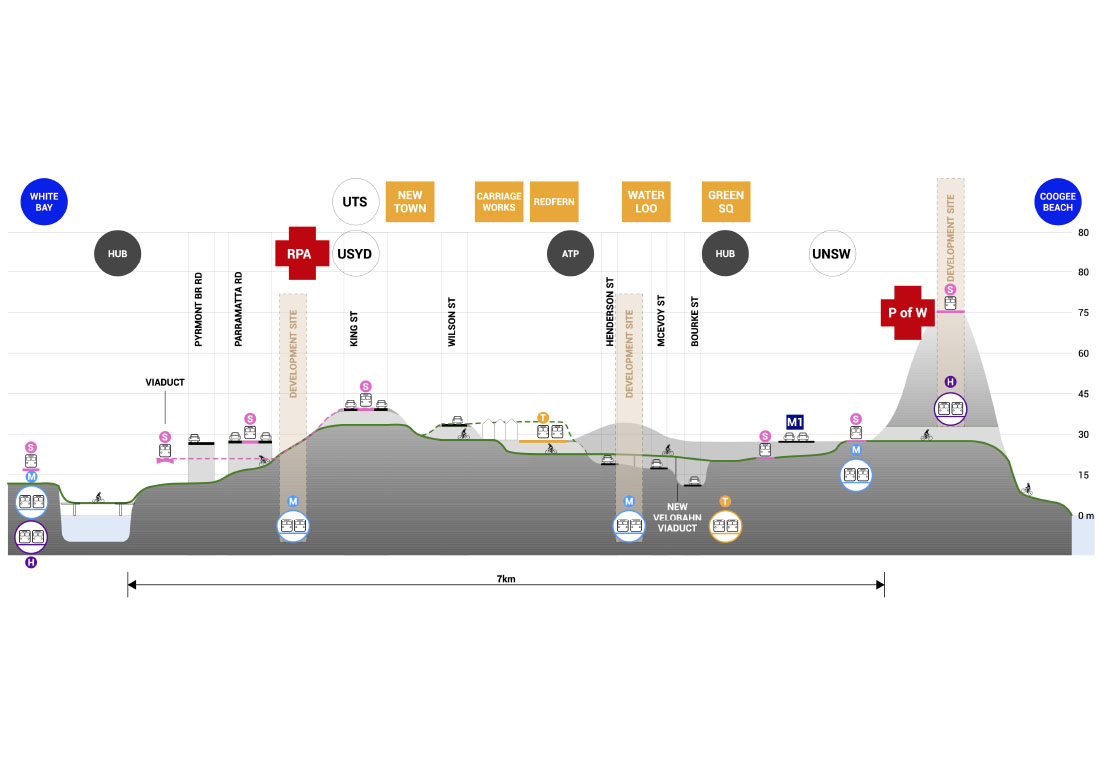 Bay to Beach Velobahn tunnels through and bridges over Sydney's topography
Bay to Beach Velobahn tunnels through and bridges over Sydney's topography Velobahn atop the Central rail corridor moving commuters from Ashfield to the CBD
Velobahn atop the Central rail corridor moving commuters from Ashfield to the CBD
Hyper Active Transport
Hyper Active Transport
Featured in the shortlisted entry to the Australian Urban Design Awards 2016
Featured in the shortlisted entry to the Australian Urban Design Awards 2017
Policies, Programs and Concepts
Large Scale
With Sydney’s growing population and the urgent need to reduce energy consumption, transforming the city’s mobility mix is essential. Looking at cities worldwide, we can see a clear link between energy use, urban spread, and transportation types. Broadly, these cities fall into two categories:
-
Passive Transport Cities: These are car-centric cities built around large motorway networks with a “one size fits all” approach. They typically have lower population density and larger urban footprints. Examples include Dallas and Sydney.
-
Active Transport Cities: These cities rely on mass transit systems designed to offer “fit for purpose” transport options. They encourage people to leave their cars behind and choose more flexible modes of transport. Since these modes require less space than cars, such cities tend to be more compact and energy-efficient. Examples are Paris and London.
Sydney’s solution to congestion is what we call Hyper Active Transport (HAT). Active Transport refers to any energy-efficient mode that reduces dependence on cars and planes, especially within urban areas. HAT expands this concept by combining slow, short-distance transport within pedestrian hubs with fast, long-distance connections between those hubs.
In Sydney’s city centre, a HAT system could transform Metro West into an inner-city metro loop, similar in scale to the circle lines in Paris and London. These hybrid metro loops would serve under-connected areas and mend breaks in the city’s urban and social fabric. Innovative modes like Velobahns and Smartrams would enliven streets, reduce car and parking needs, link universities into Supercampuses, and help restore what the historic tram network once provided.
By prioritising pedestrians and public space, Sydney’s streets can be revitalised as Hyper Active Streets (HAS).
Although implementing HAT poses challenges, its benefits are significant. Regionally, HAT will ease congestion and redefine liveability in Sydney. Globally, tailored HAT systems address the need to reduce energy use and accommodate growing populations. This thoughtfully designed mobility network is key to making dense cities both liveable and sustainable.
